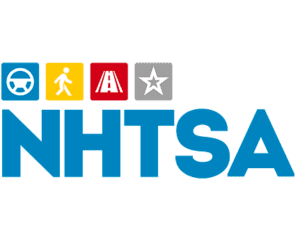Maintaining Extreme Weather Awareness with OSINT
By Jake Palmer, Content Manager, Skopenow —
Extreme weather has the ability to disrupt anything, including businesses, schools, government services, and personal lives. From hurricanes and blizzards to wildfires and flash floods, major weather events can grind daily life to a halt in an instant. When critical infrastructure goes down and traditional communication channels fail, maintaining situational awareness becomes extremely challenging. Open-source intelligence (OSINT) provides a powerful framework to help rescuers and first responders understand and react to these problems. By leveraging publicly available data, teams are able to keep track of these dynamic events and help protect people and assets.
How Weather Disrupts
Inclement conditions cause widespread disruptions in three primary ways. First, they often knock out communications infrastructure like cellular networks, internet services, and broadcast systems. Power grids are also frequently impacted, leaving individuals and organizations starved of both connectivity and electricity. This loss of traditional communication channels makes it very difficult to gather information and coordinate response efforts.
Second, severe weather presents direct physical hazards to people’s safety as well as the threat of damage to property, assets, and resources in the affected areas. Dangerous conditions like heavy winds, flooding, wildfires, and more can promptly cut off paths for aid and make regions inaccessible.
Third, extreme weather decreases operational control and situational awareness for any groups involved while increasing uncertainty about the latest conditions on the ground. Normal chains of command are disrupted and decision-makers are left without reliable, up-to-date information from official sources in order to plan their next series of steps.
How OSINT Helps
OSINT aggregates data from a wealth of sources, providing robust situational awareness capabilities. This generates a unified operational picture that provides a wide variety of information in real time.
By casting a wide net across open-source data, OSINT can detect weather incidents as soon as possible through commercially available weather, fire, and natural disaster data, early social media reports, news articles, camera feeds, and other indicators that often appear before official announcements. It surfaces data from non-traditional sources like civilian smartphone videos and emergency radio communications that may be the only channels still online when other communications are down.
OSINT enables teams to gather real-time information and imagery to support search and rescue efforts, even when traditional information sources and communication channels are down. Satellite imagery and social media support first responders and emergency management teams with tasks such as damage assessment and resource allocation. It can even help by finding victims who are sharing their location through social media.
With an OSINT-based approach, groups impacted by severe weather are less likely to experience total blackouts and be left in the dark, helping them save more lives in disaster scenarios.
OSINT Tools and Sources
There are a variety of sources that can be leveraged for OSINT analysis during severe weather events, including:
Traditional news
Social media, blogs, and forums
Police reports
Traffic data including cameras
Weather sensors
Satellite imagery and radar
It is also important to highlight that manually sifting through mountains of data can introduce enormous challenges. That is why AI and automation are critical for processing relevant volumes of information from open sources in a timely manner. Algorithms can automatically detect relevant information about extreme weather events while filtering out extraneous noise. From zonal geographic filtering to natural language processing of unstructured data, AI amplifies the capabilities of human analysts.
Situational awareness tools like Skopenow’s Grid can visually map and integrate crucial inputs into a unified, common operating picture that is automatically updated and synthesized as new information streams in.
The Power of OSINT for Extreme Weather Awareness
When extreme weather strikes, having robust situational awareness is vital. However, this is also when traditional communication channels are frequently disrupted. Whether you are a business continuity professional preparing for operational impacts, an emergency responder coordinating aid efforts, or a concerned citizen staying safe, OSINT offers a powerful solution. By taking an OSINT-driven approach with the right sources and technology, you can maintain strong real-time visibility into dynamic severe weather events through open-source information. OSINT delivers the situational awareness needed to make informed decisions even when extreme weather disrupts normal lines of communication and control.
Join over 1,500 organizations, including numerous large government and law enforcement agencies, that rely on Skopenow to make better decisions. Schedule a personalized demo today at www.skopenow.com/try to explore the platform’s transformative potential.
About Skopenow
Skopenow is a leading provider of comprehensive threat intelligence and OSINT solutions. The company’s investigative products are used by over 1,000 customers, including 20% of the Fortune 500 as well as numerous government and law enforcement agencies. Skopenow empowers organizations to more effectively and efficiently gather and analyze open-source information, identify trends and patterns in the data, and detect emerging threats and fraud. Founded in 2016 and headquartered in New York City, Skopenow is a high-growth, venture-backed technology company.
Skopenow works with insurance carriers, law firms, global security teams, government agencies, media companies, licensed private investigators, researchers, law enforcement agencies, and more. For more information, please visit www.skopenow.com.
Source: Skopenow



